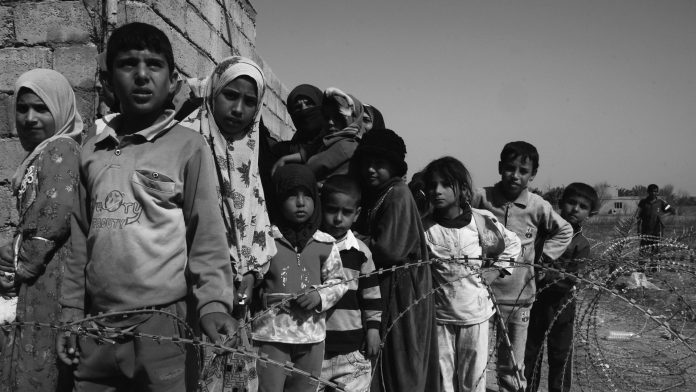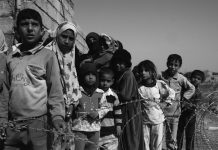This article is penned by Shambhavi Upadhyay, from Symbiosis Law School, NOIDA. This article aims at contemplating how technological advancements continue to act as an antagonist to the International Humanitarian Laws and find ways to balance them.
Table of Contents
Introduction
For many years, the world of cinema has produced films about wars and armed conflicts. Some of these conflicts are represented as internal, whereas, others are between two or more state or non-state actors. The popular Marvel movie series of ‘Avengers’ is rather famous for the futuristic war technologies, powerful and scientifically equipped heroes, incredible fight sequences, and the nefarious yet astute villains. The characters have long histories, some dating back to World War II. The broad laws of war, however, that continue to apply ever since remained the same, humanitarian laws. Although the Marvel world is a work of fiction and highly digitized, it reflects a magnified version of how development in warfare technologies is challenging the balance between itself and humanity.
The world first saw the wide-scale use of technology for armed conflicts in World War II with the major developments in logistical support, communication technologies, aircraft, rocketry, nuclear and chemical power, and weaponry. With the conclusion of World War II, the arms race between the USA and the former USSR began. Ever since countries across the world have tried developing the means and methods of warfare to shield themselves from any unforeseen military threats. This, however, has led to a major shift in how international humanitarian laws used to apply in situations of armed conflicts.
A brief idea about the International Humanitarian Law
International Humanitarian Law, also known as the law of war, is a set of rules which are applicable in situations of armed conflicts. It aims at bringing a balance between humanity and international military necessities. However, it does not necessarily apply to internal disturbances or isolated acts of violence within a state, which means that two or more states are generally parties to it. It constitutes a part of international law which governs the relations between independent states and is shaped through various treaties, conventions, and international customs. The four Geneva Conventions of 1949, along with the Hague Convention of 1907 and customary international laws, serve as the core sources of international humanitarian law.
It concerns itself with regulating the conduct of armed conflicts rather than the commencement. When a conflict commences, the law begins to apply to all sides equally, regardless of who initiated the war. International humanitarian law operates on two fundamentals:
- To protect people who are not, or are no longer, a participant in the armed conflict – civilians and medical personnel.
- To restrict the means of warfare – weapons and methods of warfare, including military tactics.
The law aims at protecting all people who are unable to fight or surrender in conflict. It provides detailed rules for the way in which civilians are to be treated under the rule of the enemy party. This includes basic human necessities of food, shelter, medical aid, and connection with community (or communication). It also prohibits means of warfare that are expected to cause unnecessary suffering at a large scale, cause severe, or long-term/irreversible damage to the environment, or fails to discriminate between civilians, their property, and participants of armed conflict.
The need behind the International Humanitarian Law
The guiding principles of international humanitarian law stem from the need to limit the conduct of armed conflicts. This is because of, what Jonathan Crowe and Kylie Weston-Scheuber in their book ‘Principles of International Humanitarian Law call, the “morally exceptional” nature of warfare. Acts that are normally viewed as inhumane and representing the “worst” side of humankind are regarded as permissible and praiseworthy for those engaged in warfare. We often hear “everything is fair in war”, this is the notion of “absolute warfare” – warfare where all moral codes become inapplicable and the sole aim is to defeat the other party. Another unfortunate fact about such warfare is that it will not arrive at a conclusion until one of the parties is destroyed beyond repair. Therefore, this approach to warfare is unfavourable to the idea of peace and peaceful coexistence.
That is why the world needs the doctrine of “Humanitarianism”. It aims at bringing back the ideals of morals to the Warfield and embraces moderation. Conclusively, international humanitarian law aims to ensure obedience to the “most basic human values of dignity, community, and freedom from suffering.
Change in perception of the Humanitarian Law after the introduction of technology
As discussed so far, international humanitarian law deals with imposing limitations on the choice of weapons and strategies of warfare in an armed conflict. The constant advancement of science and technology has altered the nature of weapons and war strategies, complicating the implementation of international humanitarian rights. Other advanced technological weapons include remote-controlled weapon systems, automated weapons, cyber warfare; biological, radiological, and chemical weapons. Some of the most widely used advanced weapons of warfare are as follows:
- The drones, or unmanned aerial vehicles, were first deployed to serve as a device that aids surveillance and reconnaissance purposes in the 1960s. However, in the last fifteen to twenty years, it has been used widely for military purposes, more specifically, targeted attacks on persons or things.
- Automated weapons include automatic firearms, landmines, and sentry guns. Human Rights Watch defines landmines as “weapons that cannot discriminate between a civilian or a soldier.” Landmines violate the principles of international humanitarian law that require the protection of civilians in a war situation. In January 2020, the international non-governmental organization also condemned the United States government’s decision to reverse the ban on landmines.
- Cyberwarfare, though different from traditional war, is based on a virtual setup and has the capacity to affect the real world massively. In a globalized world connected by the internet, vulnerability to cyber attacks is unprecedented. These attacks have the potential to damage installations, industries, telecommunications, financial systems and can even jeopardize national security secrets.
- Chemical weapons have reportedly been widely used in the Syrian conflict. The government forces used a large number of chemical weapons against the rebelling population to take control of the strategically valuable territory, causing more than 1400 deaths.
The list is bound to receive new additions as countries continue working on futuristic technological weapons. With the growth in artificial intelligence, it can be foreseen that the upcoming developments in weapon technologies will be heavily based on it.
Relation between technology and humanity in 21st century
Society shapes technology and technology shapes society. Humans have become inextricably dependent on technology. We spend the majority of our time in front of a screen, whether it is a laptop, smartphone, or television. Work, leisure, communication, and appliances of daily use are just a few of the ways we depend on technology. No sphere of human life is left untouched. Technology has made us capable of even altering our natural physical identity or creating a virtual avatar. Recently in Shanghai, a giant QR code, projected through drones, was displayed to celebrate the first anniversary of the China release of Princess Connect! Re: Dive, a role-playing video game. Reportedly, the QR code when scanned allowed the user to download the game on their device. This revolutionary way has been quoted as “the future of advertising”.
On the one hand, humanity is developing technologies that have the potential to change the world as we know it. On the other hand, it exposes us to a plethora of uncertainties. The flip side of the coin known as “Tech” has its own set of perils. The failure of a software giant can impede the work of millions around the world. A power outage is no more the only threat to our dependence on technology. Not only this, the world is more connected than ever through the internet. It has its own advantages, but the disadvantages are uncountable too. Social media has served as a magnifying glass, thanks to technological advancements. Although it magnifies and highlights the positive aspects of the world, such as opportunities, cultural heritage and solidarity, humanitarian support, philanthropy, and human empathy. It has also amplified the wrong of hate speech and exacerbated cultural divides, while also serving as a display board for community apprehensions that weren’t so apparent before.
The need for the protection of humanity in the digital era
The real world remains unchanged no matter how immersive a world altered by technology is. One can avoid the rise in global temperature by turning on the air conditioner, but this will not prevent the natural temperature from rising.
Similarly, while using social media away from the physical construct of society, a person may disregard his responsibilities as a citizen. The immersive experience gives the impression that the person’s actions are not being monitored. Under these circumstances, the ‘netizens’ are seen breaching general codes of societal conduct that they would otherwise follow. The unwanted increment in hate speech, communal posts, and threats of violence have been proven to incite violence across countries.
A recent example would be the Delhi riots of February 2020. It was alleged that Facebook India did not properly apply its community guidelines that could have prevented the mass outrage which resulted in a riot across many areas of the city. The need to regulate digital actions that may lead to conflicts.
Unmanned aerial vehicles, or drones, have also been the subject of debate for years before proper legislation was enacted to ensure that they do not infringe on citizens’ privacy. The advancement of self-driving cars necessitates changes in the Motor Vehicle Acts of various countries. Laws must evolve over time to protect people’s basic human rights. While the world is more connected through online platforms than it is offline, the effect that these platforms have on human psychology is significant and alters their view of the world around them.
Contribution of International Humanitarian Law in protecting humanity in the age of digitalization
While the world faces numerous challenges as a result of technological advancements, humanitarian laws strive to ensure that humanity is saved from the most severe form of damage, a situation of war. Article 35 of the Geneva Convention does not allow parties to a conflict to choose methods or means of warfare that cause long-term destruction, and which fail to discriminate between military personnel and civilians.
The principles of humanitarian law have ensured limitation on the use and development of weapons and means of warfare by a number of conventions, some of which are:
- The Biological Convention (BWC), 1975 – It was the first multilateral disarmament treaty that banned an entire category of weapons of mass destruction.
- Chemicals Weapons Convention, 1997 – It led to the formation of the Organization for the Prohibition of Chemical Weapons (OPCW) which carries out inspections and monitors the activities related to chemical weapons. It prohibits the development of and promotes the destruction of, chemical weapons in the signatory countries.
- The Nuclear Non-Proliferation Treaty (NPT),1970, and the Comprehensive Nuclear Test Ban Treaty (CTBT), 1996, control the development and use of nuclear weapons.
Talks on international levels continue to take place to deliberate upon the needs of humanity in a technology dominant world that evolves weapons technology with each decade that passes.
Understanding the pros and cons surrounding technology
Handling a humanitarian crisis at times of war is itself a difficult job that requires precision and care. Therefore, it becomes essential that the potential of technology is correctly tapped. Judicious application of digital technologies, along with expeditious utilization of human prudence, can help alleviate the sufferings of those involved and protect them from potential threats. The use of digital technologies, however, has its own set of advantages and disadvantages, some of which are as follows:
Pros
Better communication
While battling a situation of a humanitarian crisis, technology aids significantly. When relaying information to the different organs of rescue forces affects the efficiency of the mission, technology ensures speedy, smooth, and in-time communication.
Efficient data collection and storage
Earlier storing information about the people affected was difficult as it required a lot of time and human effort to physically record the correct data and store it in hard copies. Online (or offline) databases have allowed organizations to preserve information and also conduct better search time necessary.
Risk assessment and mapping
Drones are used for monitoring the affected area. These help in closely assessing the damage caused and conclusively plan the actions that need to be taken and resources, both human and artificial, that will be required. They also assist in accurate mapping of an area that would’ve been difficult for human force to do.
Medical aid and transportation
Digital tools and artificial intelligence have massively improved the medical logistics and procurement chains. Technology has also improved and advanced the quality of medical aid that can be extended to people affected. Futuristic modes of transportation decrease the time required for achieving necessary external aid or refill resources.
Humanitarian robots
Digitization has also led to the introduction of ‘humanitarian robots’ that are ideal for rescue and relief operations. Some of these are capable of working on difficult terrains, move heavy concrete debris aside and also send signals to main vehicles when human activity is detected.
Cons
Weapons of mass destruction
Chemical and biological weapons pose a great threat to humanitarian principles. Furthermore, it is difficult to regulate the resources that countries own and the technologies that they intend to develop. The world has already witnessed the destructive power of nuclear weapons, which has resulted in numerous arms control and proliferation treaties. Countries, on the other hand, continue to threaten each other with nuclear weapons. Some countries have also withdrawn from such treaties, allowing them to continue producing such weapons.
Indiscriminate weapons and tools
Apart from landmines, a number of AI robots have entered the weapons market. There is no surety that these robots are capable of differentiating between a soldier and a civilian, or an injured soldier. Some of these robots use sonar to detect a hidden enemy vessel, others use movement and heat as detectors.
Cyber attacks and threat to privacy
Digital databases are vulnerable to cyber-attacks. It is important that the data of people identified and rescued in an armed conflict is recorded to facilitate the process of providing relief. However, the data if leaked or stolen can risk and harm these individuals who are already ailing. Furthermore, drones too pose a risk to privacy but in a situation where lives are at risk, the greater good may rule the privacy question out.
MDH: Misinformation, Disinformation and Hate Speech
We rely heavily on digital media for information. The availability of research, data, and analysis online is a boon to humanity, increasing awareness and sparking discussions. Unfortunately, the Internet has also been widely used to disseminate misinformation. When a person is exposed to ‘too much data,’ it becomes difficult to identify fallacies and assess the credibility of the information. Social media, where everyone is open to express their opinions, also invites the bane of hate speech that flouts community guidelines and still goes unchecked. ‘Deep Fakes’ are another threat to the communication of reliable information one receives.
Ways to curb misuse of technology affecting humanity
Data protection and other policies
There is an urgent need to cater to the data protection of individual states and the globe by devising new laws. The big tech companies that control and facilitate most of the digital structures work on need to deliberate upon their privacy policies as well as community guidelines. Apart from this, there is a need for increasing linguistic representation in these firms so that policies are well framed according to their target audience.
Check on MDH (Misinformation, Disinformation, and Hate Speech)
The positive change in privacy and community guidelines will prevent many evils at once, including hate speech, and other communal, sexual, and violent remarks and threats. Other ills of misinformation and disinformation can be curbed by increasing awareness amongst netizens. It is also important that the laws relating to news and broadcasting are revised to form umbrella protection from such deceiving information. Social media platforms can also come up with a symbol that specifies if the information is not from a verified source.
Limiting weapon technologies
Humanitarian organizations continue to research upon and warn International assemblies about the loopholes and foreseeable threats to humanitarian laws. International state actors need to come together and formulate a way out of this tornado of technological advancement which can flout these protections gravely if left unchecked. The research and development of tools and means of warfare that are indiscriminate should be condemned and new rules should be deliberated on to regulate the new threats to humanitarian laws.
Conclusion
Technology is a boon as well as a bane. This depends on how humanity uses it to develop and evolve. International humanitarian laws ensure that civilians and non-participants in a conflict are protected from an unavoidable war and are allowed basic human dignity, rights, and necessities to survive. It can be concluded from the above discussion that the principles of international humanitarian laws clearly lay out the margins within which a war may be conducted.
It can be understood that to separate futuristic weapons and warfare methods from war-like situations in the 21st century is unimaginable, the regulation of it becomes even more essential. Regulating these new developments and methods of war is possible if international leaders and important stakeholders, including humanitarian organizations, highlight and deliberate upon an expeditious policy and set of laws.
References
- https://www.icrc.org/en/doc/assets/files/other/what_is_ihl.pdf
- https://gsdrc.org/topic-guides/international-legal-frameworks-for-humanitarian-action/concepts/overview-of-international-humanitarian-law/
- https://books.google.co.in/books?id=LQMCAQAAQBAJ&printsec=frontcover#v=onepage&q&f=false
- https://www.icrc.org/en/doc/war-and-law/treaties-customary-law/geneva-conventions/overview-geneva-conventions.htm
- https://international-review.icrc.org/articles/digital-technologies-humanitarian-law-policy-action-913
- https://guide-humanitarian-law.org/content/article/3/weapons/#:~:text=Humanitarian%20Law%20Limits%20the%20Choice,indiscriminate%20or%20excessively%20injurious%20effects.
LawSikho has created a telegram group for exchanging legal knowledge, referrals and various opportunities. You can click on this link and join:
 Serato DJ Crack 2025Serato DJ PRO Crack
Serato DJ Crack 2025Serato DJ PRO Crack











 Allow notifications
Allow notifications



